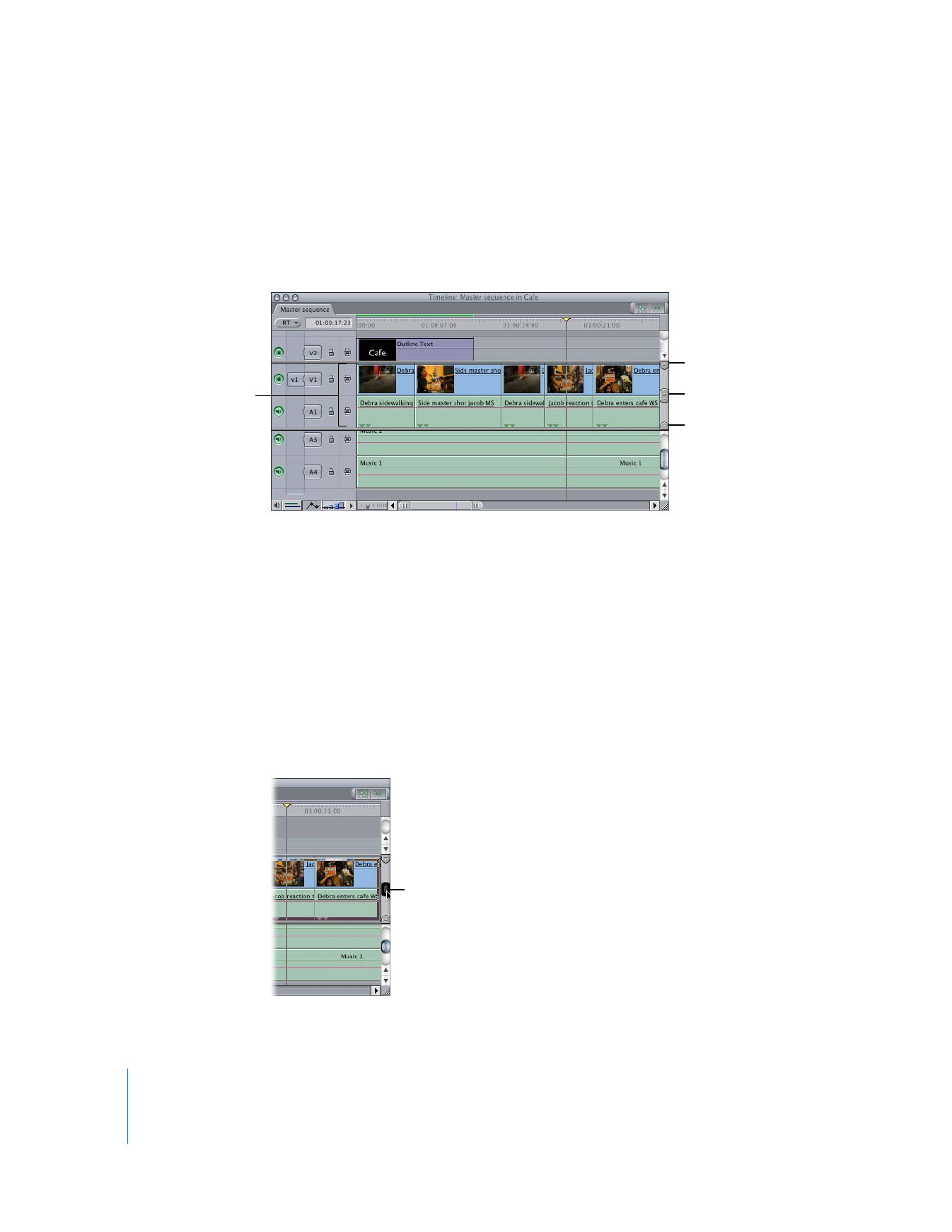
Creating a Static Region in the Timeline
If you are working with more tracks than you can see on the screen at once, and you
spend a lot of time scrolling through multiple tracks in the Timeline, you may find it
useful to create a static region in the middle of the Timeline for tracks that you always
want to see. This region can contain video tracks, audio tracks, or both. Creating a static
region results in three total regions in the Timeline: a top, scrollable region for your
excess video tracks, a middle static region, and a bottom, scrollable region for your
excess audio tracks. You can’t scroll up or down in the static region, but it can be
resized to accommodate more or fewer tracks.
For example, if you’re working on the audio of a project with sync sound dialogue in
audio tracks 1 and 2, and multiple tracks of music, sound effects, and audio ambience
in the tracks below that, you can define a static region containing just tracks 1 and 2,
leaving the rest of your audio tracks in a lower, scrollable region. This way, your
dialogue tracks will always be visible. You can scroll up and down through your other
audio tracks, editing and making various adjustments while using the audio tracks in
the static region as a reference point.

134
Part II
Rough Editing
To create a static region for video and audio tracks:
1
Drag the upper thumb tab in the vertical scroll bar up to create a static area for as
many video tracks as you want to keep in the middle.
2
Drag the lower thumb tab in the vertical scroll bar down to create a static area for as
many audio tracks as you want to keep in the middle.
When you have a static region in the Timeline, there are two dividers: one between the
top scrollable region and the static region, and one between the static region and the
bottom scrollable region. Each divider has its own thumb tab.
To resize a static region in the Timeline:
m
Drag the dividers or thumb tabs to include tracks in (or exclude tracks from) the static
region. As the static region gets larger or smaller, the size of the other regions is
adjusted accordingly.
To move the static region up or down in the Timeline:
m
Drag the center slider in the static region’s scroll bar to move the entire region,
automatically resizing the scrollable regions above and below the static region.
Static area
Slider
Drag the lower thumb
tab down to include
audio tracks in the
static area.
Drag the upper thumb
tab up to include video
tracks in the static area.
Drag the center slider
to move the static region.

Chapter 8
Working with Tracks in the Timeline
135
II
To eliminate tracks from the static region, do one of the following:
m
To eliminate video tracks from the static region: Drag the upper thumb tab of the static
region down so that it overlaps the lower one, then release the mouse button.
m
To eliminate audio tracks from the static region: Drag the lower thumb tab of the static
region up so that it overlaps the upper one, then release the mouse button.
To eliminate audio tracks,
drag this thumb tab up.


9
137
9